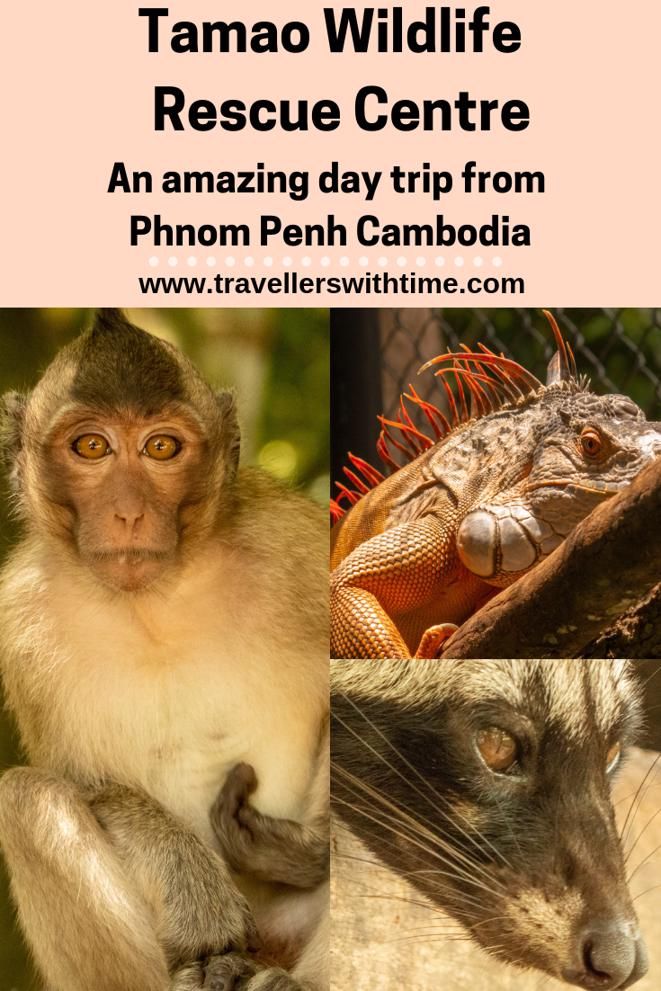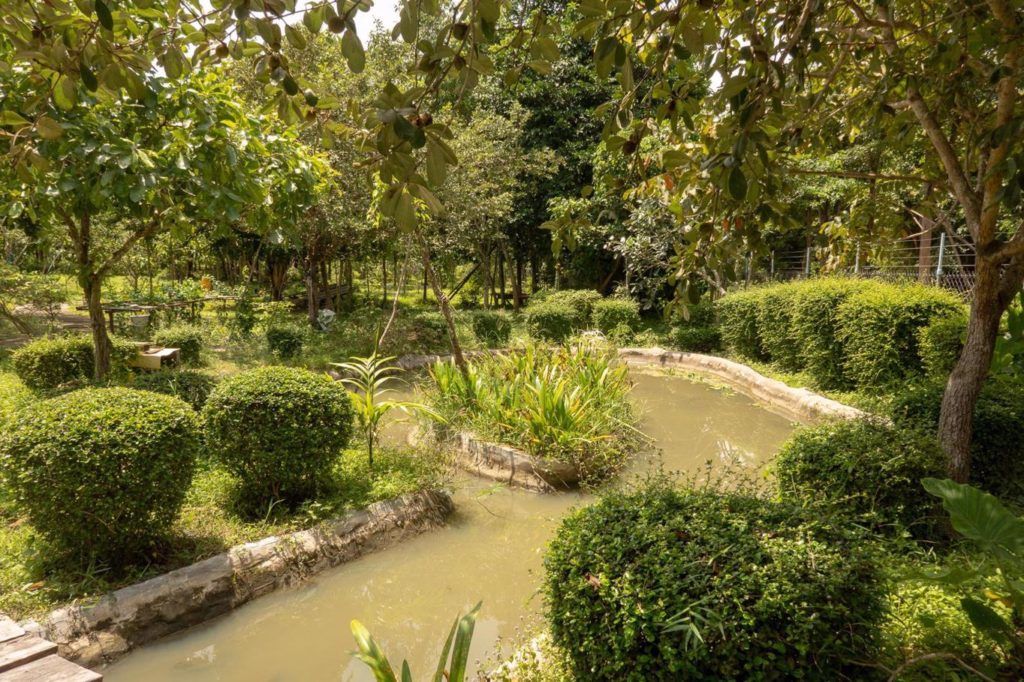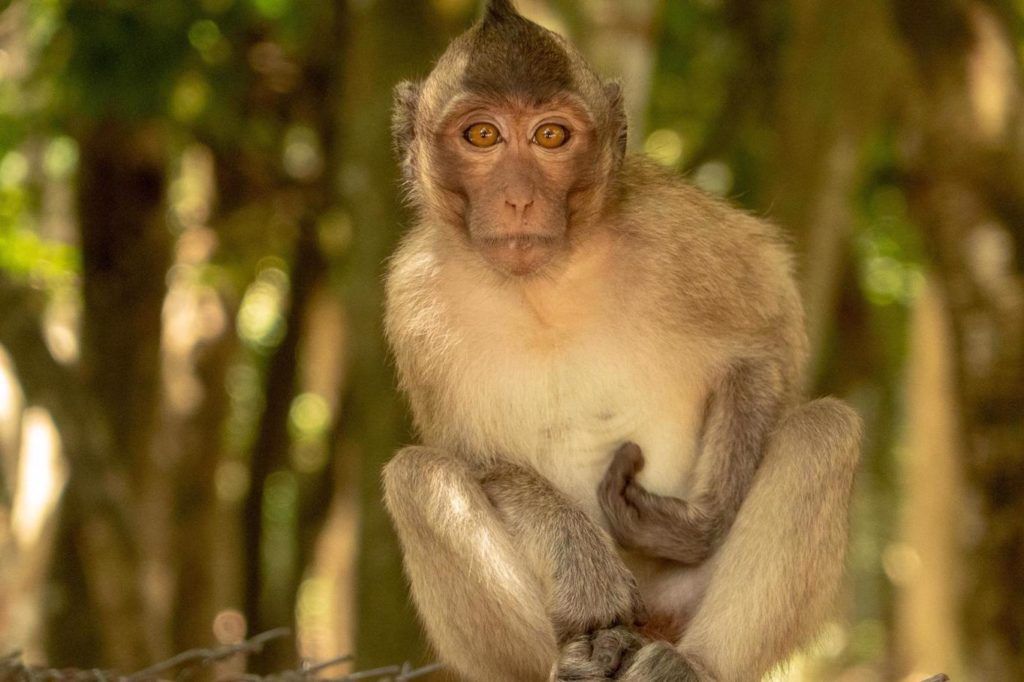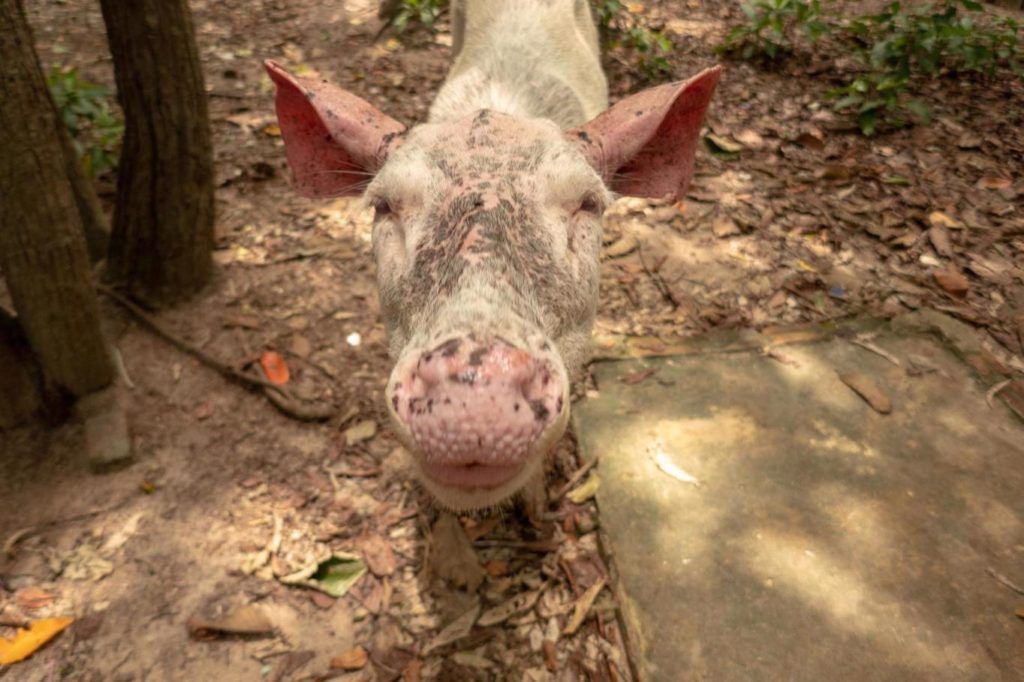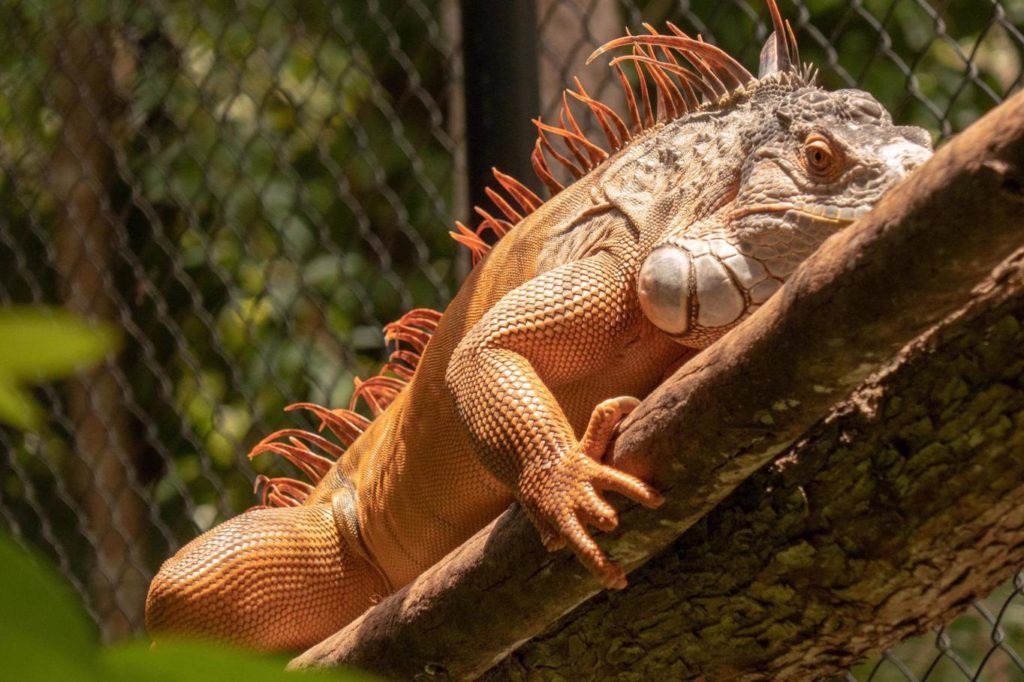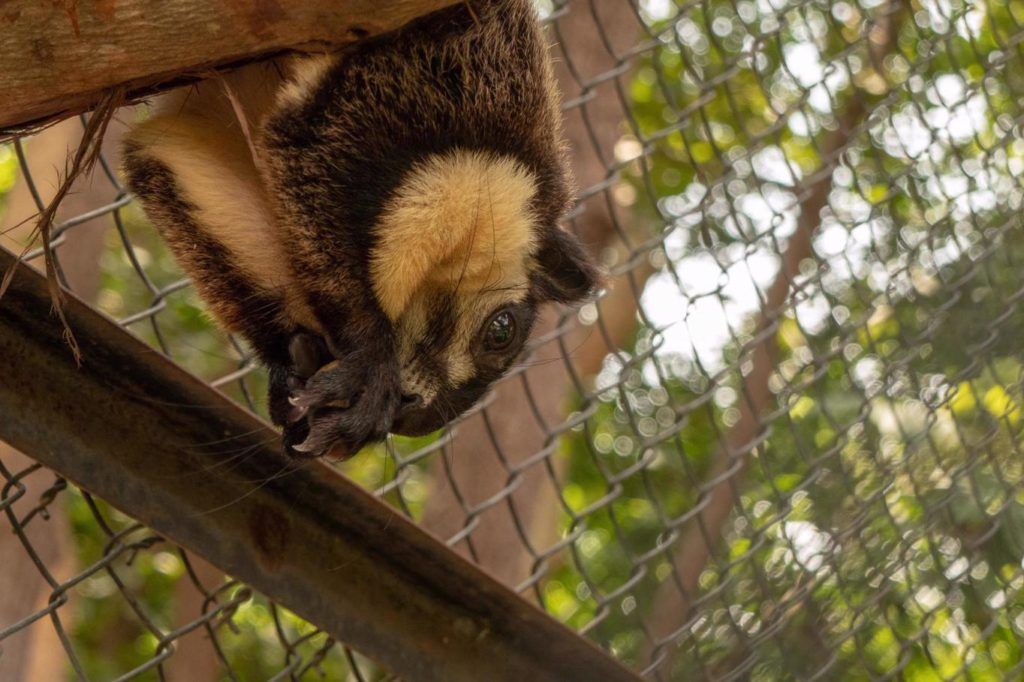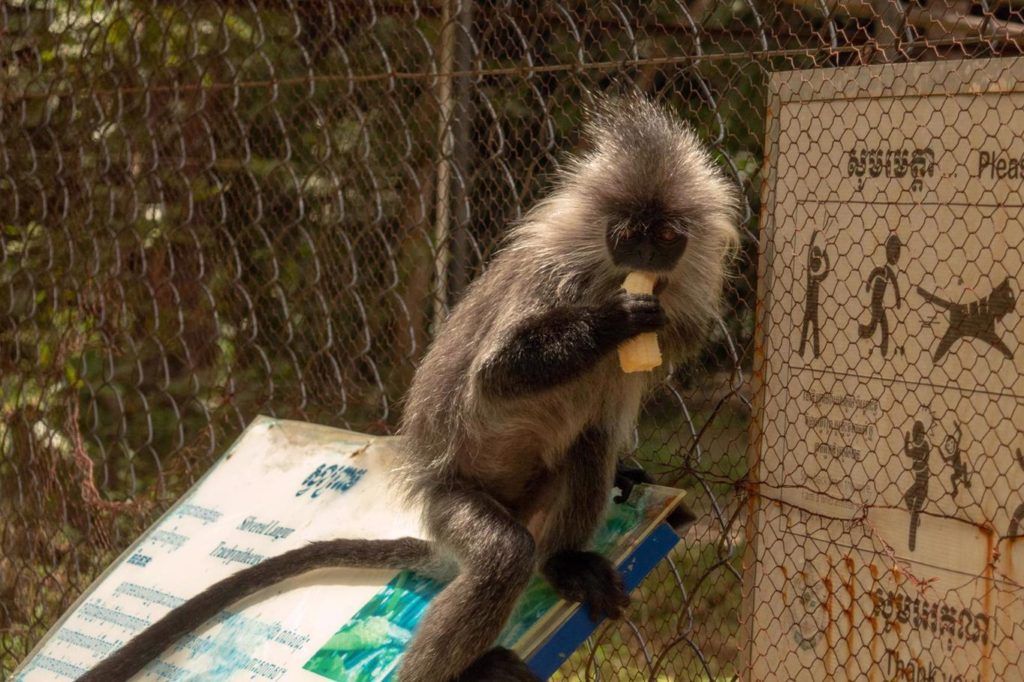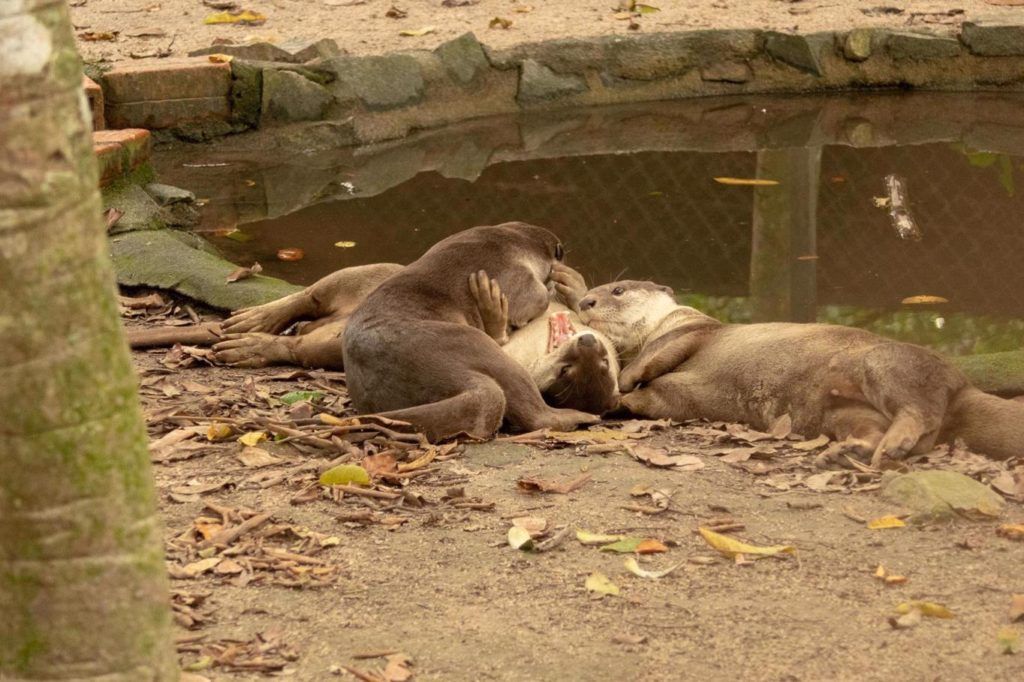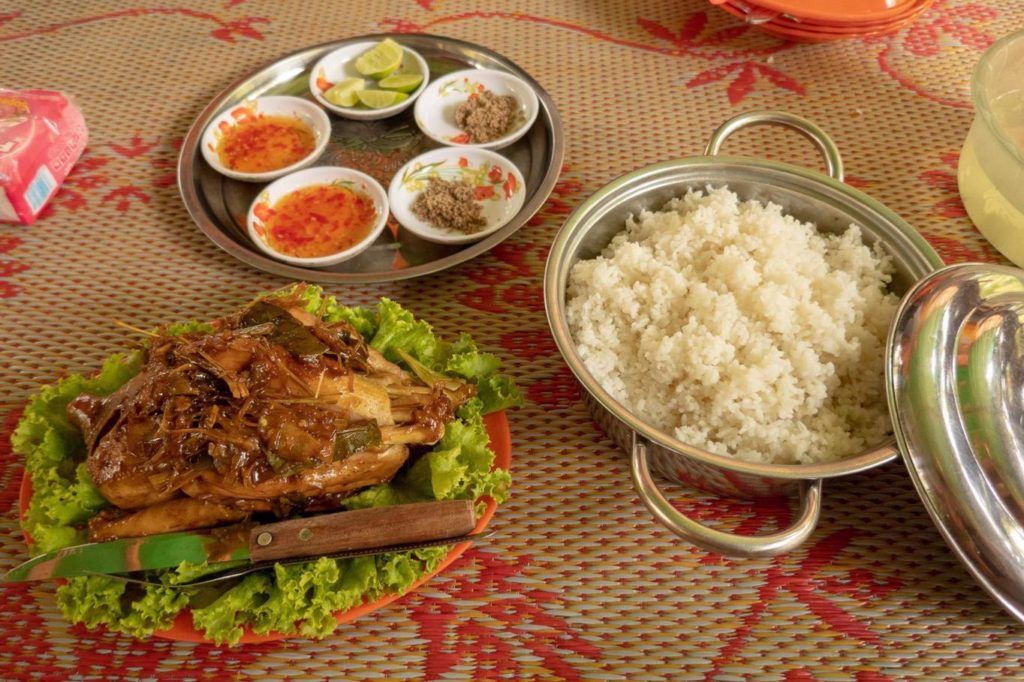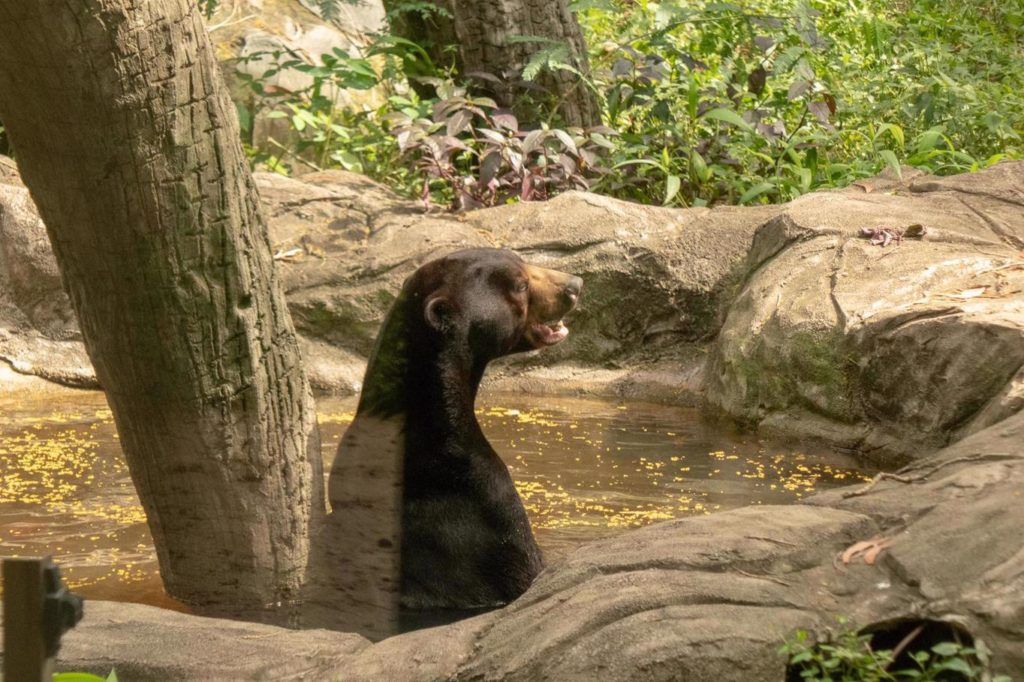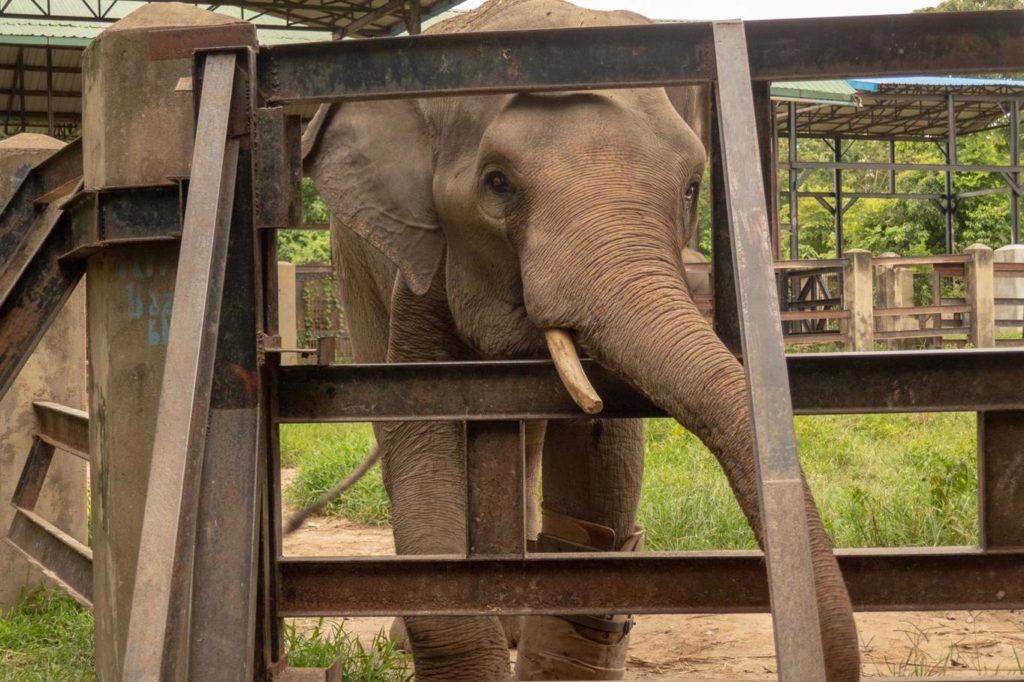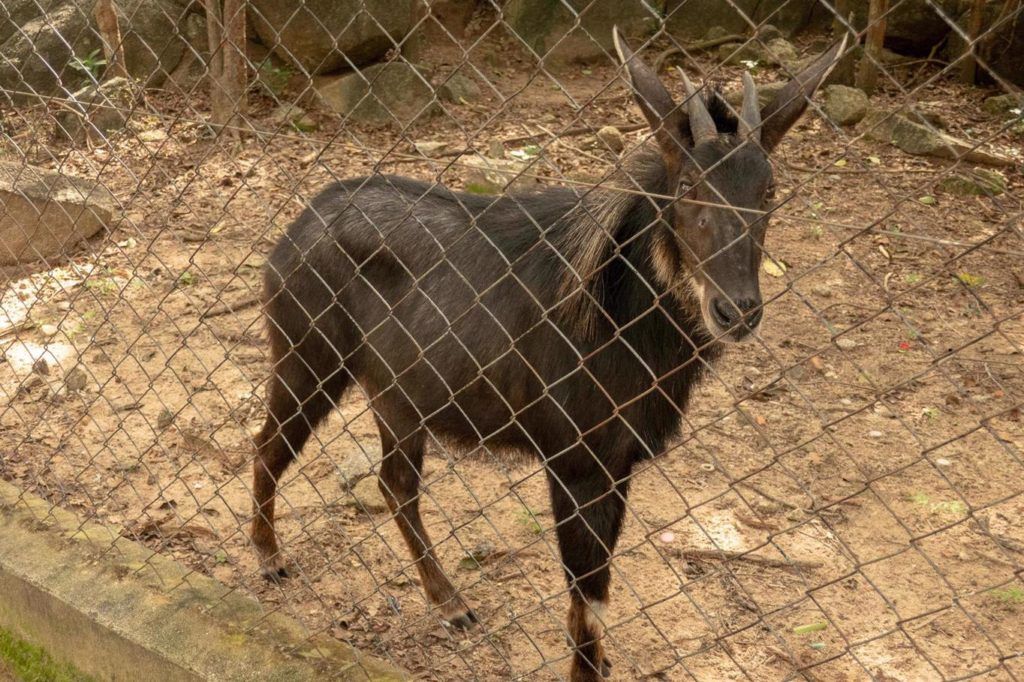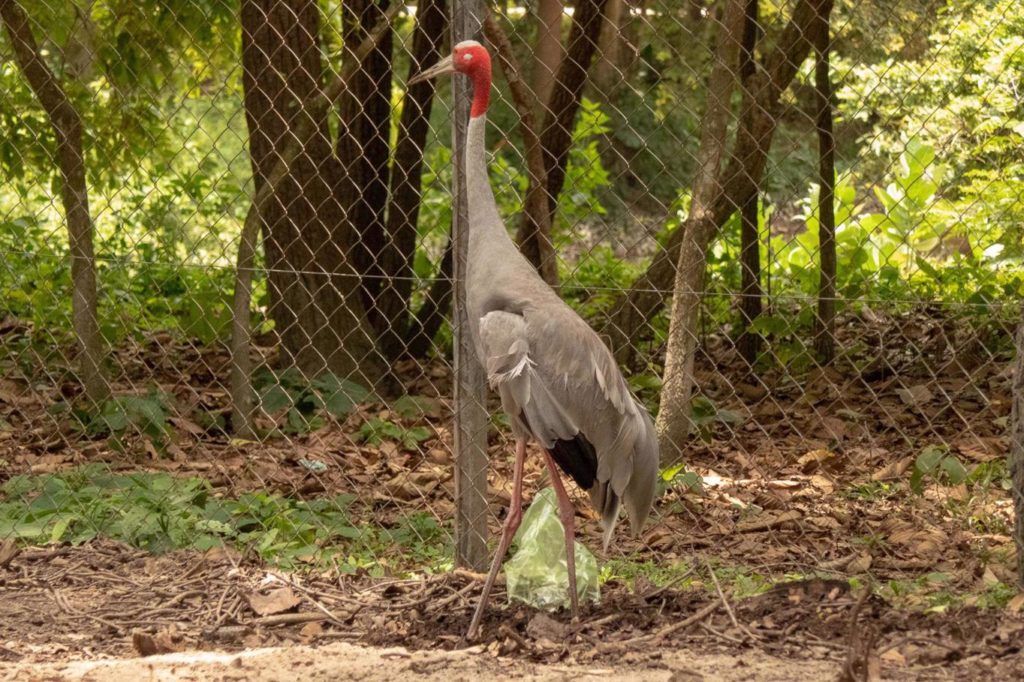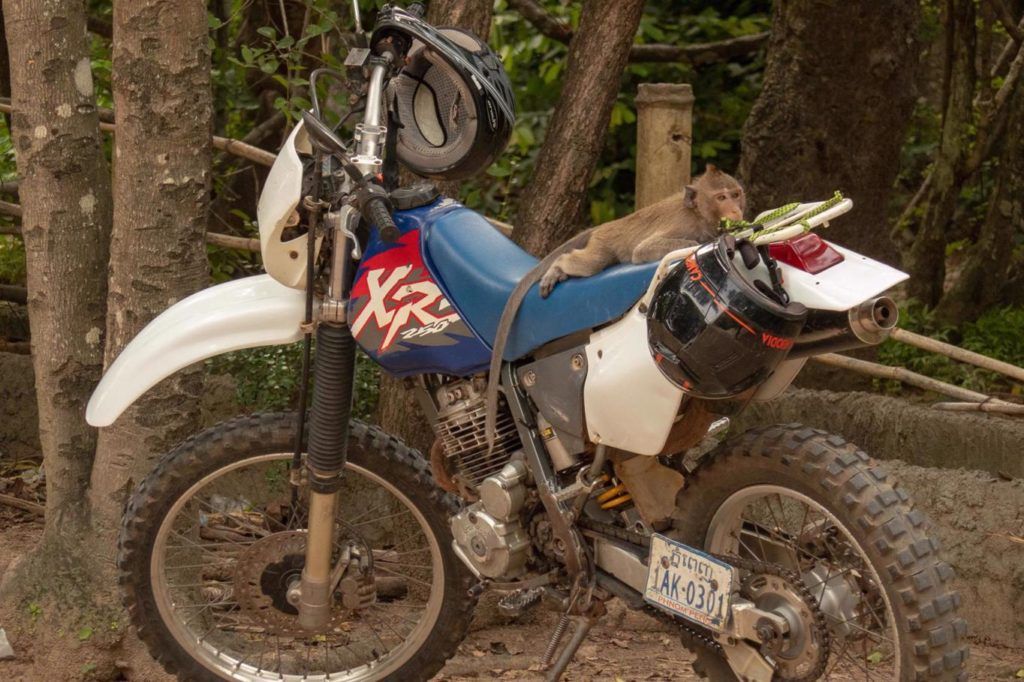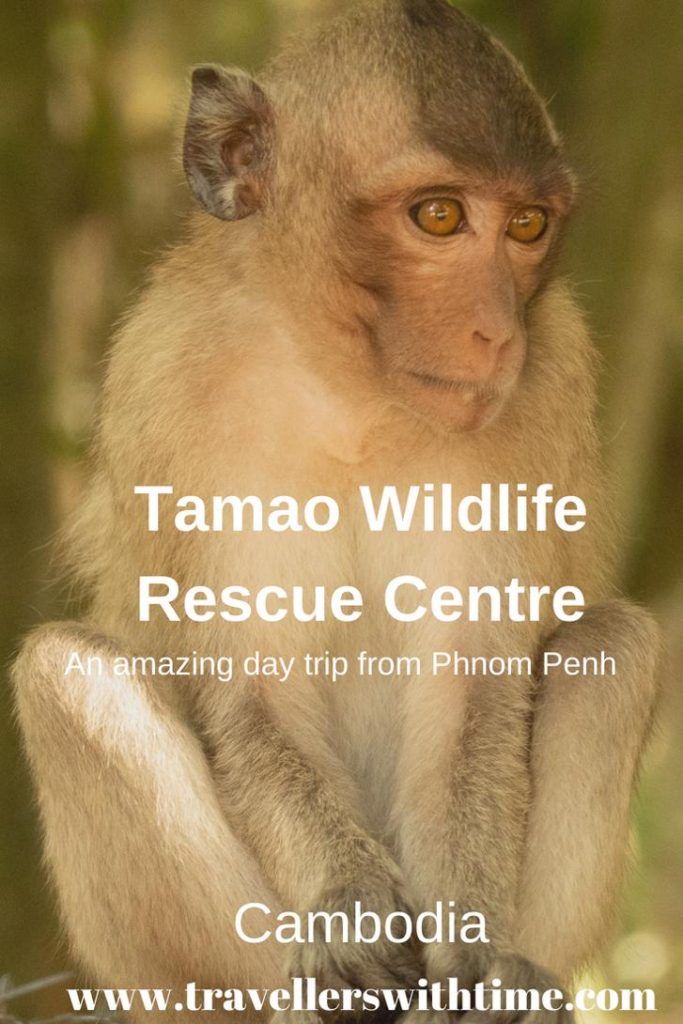Phnom Penh Zoo – Tamao Wildlife Rescue Center
The Phnom Penh Zoo, more accurately known as the Tamao Wildlife rescue center, or Phnom Tamao, is an amazing facility, housing and rehabilitating some of Asia’s most mistreated wildlife. It is the largest zoo in Cambodia with over 12000 rescued animals from more than 102 species.
I always get a bit nervous when I hear the word ‘sanctuary’, or worse still, ‘zoo’. Its hard to know whether you’re going to turn up and have an amazing time or be horrified at the animals and the way they are kept. Not to mention being extra horrified that you’ve just paid, and therefore supported it. We were very pleasantly surprised at Phnom Tamao.
Phnom Tamao history
Located around 40km outside of Phnom Penh, the Phnom Penh Zoo, or Tamao Wildlife Rescue center, was established in 1995 on over 6000 acres of protected forest. The zoo is run jointly by the Cambodian Forestry Administration and the not for profit charity, Wildlife Alliance Cambodia.
A wildlife rapid rescue team (WRRT) is employed to seek out animal traffickers and people trading in endangered and illegal wildlife and confiscate the animals. These are animals who are victims of loss of habitat, confiscated from poachers, abusive owners, private zoo’s and illegal trade.
Once in the care of the wildlife sanctuary, the animals are attended to by trained veterinarians, animal husbandry experts and conservationists, with the aim of returning them to health and releasing them into the wild.
It is the Wildlife Rapid Rescue Team who assess the animals for release based on their health and their ability to survive and thrive on their own in the wild. Whenever possible the animals will be released.
Once an animal is determined to be fit for release, they are taken to the wildlife rehabilitation station in Koh Kong province. Here, they are released into large enclosures, at the site where they will eventually be freed.
The animals will spend months in these large enclosures, getting familiar with the area and redeveloping some of their more instinctual, natural behaviours. When it is believed the animals are ready, the door is open to the enclosure and the animals are free to leave whenever they are ready.
To ensure successful release, the animals have access to their enclosures and food may be provided to supplement their natural foraging or hunting attempts. The animals are also monitored using technology such as radio transmitters and cameras to ensure they are thriving in their new home.
Visiting Phnom Penh Zoo
Before arriving at the Tamao Wildlife Rescue Center, I had done a little research online but still wasn’t sure what to expect. The reviews on the zoo itself were great, but there were a few negative ones about the local people and the staff.
When we first arrived at the ticket office for the Phnom Penh Zoo, we were greeted by a rather, uninterested, ticket seller, and we were surprised to learn that it was only $5 USD entry fee. We tried to ask some questions, but the woman said “motorbike” and just waved her hand, clearly, she just wanted us to enter.
After helping myself to a brochure with a map, I was surprised to see that the motorbike should have cost us 1000 riel, but we weren’t charged for it.
As we rode into the Phnom Tamao rescue center we were glad that we had hired a big dirt bike. The roads are sandy, gravelly and potholed. Be warned!
The main thing that struck us however was the sheer number of monkeys, Macaques, EVERYWHERE. Absolutely everywhere. These are not the usual tame, or aggressive thieving monkeys you find around Asia. They are wild monkeys that spend their time as monkeys do. They’re obviously thriving living within the wildlife sanctuary as there are many, many mothers carrying babies.
There are large arrowed signs pointing to the direction you can move around the park and as we followed them, we ended up in what they call zone 1. Here, you can park the motorbike, and walk into the enclosure.
I had read quite a few complaints online about the local people who try to sell you food for the animals. People had said they are very rude and pushy, and a few mentioned that they were followed around the Tamao wildlife rescue center by the locals. We did not have this experience at all. One lady approached us and a couple of firm no’s sent her on her way.
As we entered the inner circle we were instantly met with some large and very inquisitive Sambar Deer. It was amazing, and funnily enough, a little scary to be standing right next to these beautiful large deer. We tried to keep what we considered an appropriate distance, but as Ben tried to take photos the white Sambar deer was very interested in getting up close and personal.
We had been at the wildlife sanctuary less than half an hour when Ben said, “if this is all we see today, the drive and the price is worth it!”
There is very little in the way of signage, so you can’t always tell exactly what each animal is, or know it’s story, but within the inner circle of zone 1 there was the deer, crocodiles, which were contained of course, an enormous lizard, turtles, the wild monkeys and some large beautiful birds.
We understood the benefit of having an English-speaking guide when we bumped into a small group and overheard their guide explaining the story of Cookie, the Yellow Giant Squirrel. Cookie was confiscated at the Vietnam border. He had been trained as a pet and loved people, which was evident as he scampered along the fence in front of us, wanting food. He had apparently had a friend, Nancy, who died last year.
A guide is a great way to have a little more interaction with the animals. The animals seemed to know this guide, and she knew them. Many would come when called as they knew she had food.
As we moved through zone 2 there were Elds Deer, a single large stork, Northern Slow Loris, Leopard cats. It was unbelievable. We bumped in to the same tour group again and learned a little about Badboy, the only male Silver Langur in the facility.
The interesting thing about the Silver Langurs was that they could get out of their enclosure, and a couple came outside to get food. They’re not completely contained, they just have a safe secure place to call home.
The Smooth coated Otters were hilarious. They acted like puppies. When they saw a group of people they all waddled over and made noises like crying dogs, climbing over each other and resting their head on the ledge like little puppies wanting some attention.
It was now about 1 o’clock and we wanted to get some lunch. We were beside the restaurant area and as we pulled up on the motorbike, all the locals from the restaurants came out to get our attention. We had agreed to the first woman we saw, so we went and sat down on their wooden platform, atop their floor mat, and had a look at their menu. It was $10 USD for a meal. That seemed excessive.
We were hungry, so we decided to eat anyway, and we were so glad we did. We had a whole chicken, one of the nicest chickens we have ever eaten. The flavour was beyond delicious. They cooked our chicken in a large pot with a bit of water. It was covered in herbs and the inside was stuffed. I’ve never been able to get that kind of flavour into chicken. It was the best $10 we’ve spent.
While we ate we watched monkeys and pigs run around and scavenge food.
Zone 3 is where all the big wildlife is kept. There they house Sun Bears and Moon bears, Elephants, Tigers and Lions.
We stopped and were amazed to see three beautiful lionesses laying about. As we drove off on the motorbike, one of the lionesses ran beside us, the full length of her enclosure.
Bear Sanctuary Cambodia
The Tamao Wildlife Rescue Sanctuary works in conjunction with the not for profit Free the Bears group, and Phnom Penh Zoo has the worlds largest group of rescued Malaysian Sun bears, along with moon bears and Asiatic black bears. The bear sanctuary covers an area of over 10 hectares and is home to more than 130 bears.
From the wildlife sanctuary, many educational programs are conducted, as well as research into the welfare and care of bears kept in captivity. It is possible to do a specific one-day Bear Care tour or longer volunteer programs where you can directly participate in the welfare of these beautiful creatures.
We were lucky enough to see a few beautiful bears wandering around their enclosure, and one taking a quick bath to escape the heat.
Elephant Sanctuary in Phnom Penh
We came up close (a few meters and behind a fence) from a couple of beautiful elephants at Phnom Penh Zoo. A beautiful big female and a male, called Chhouk.
Chhouk is a young male elephant with a prosthetic leg. After reading online I learned he was found wandering in the Mondulkiri province with a badly injured foot. It was believed his leg was caught in a snare.
One of my highlights was seeing a beautiful bull, from quite a distance I might add, with huge, huge tusks.
Tigers in Cambodia
Although we couldn’t see the tigers, apparently there are 7 of them at Phnom Tamao wildlife rescue center. They are kept in pairs in large enclosures.
It really struck me that the Tamao Wildlife Rescue Center enclosures are right up there with some of the best enclosures I’ve seen. Each is obviously tailored specifically for the animals it contains. They are spacious, and they were clean. They were filled with toys and other options for the animal’s mental stimulation. I didn’t have a single ‘oh no’ moment.
Phnom Tamao Wildlife Rescue Center tours
There are different types of tours that you can do at the Phnom Penh Zoo.
Wildlife Alliance tours of the wildlife sanctuary Cambodia
Wildlife Alliance tours of the Phnom Tamao Wildlife rescue center give you a behind the scenes look at the wildlife sanctuary. You’ll get an English-speaking guide and have access to some of the behind the scenes areas that are inaccessible with general admission. These include watching the changing of Chhouk’s prosthetic foot, remember Chhouk is the elephant whose foot was damaged by a snare. You’ll also have access to the inner tiger and leopard enclosures. You’ll be safe behind glass.
Wildlife Alliance tours run from 8am until 5pm and include pickup and drop off, lunch and your English-speaking guide.
The cost of the Wildlife Alliance tour is $150 USD per person with 100% of the profits going back into the rescue and rehabilitation of wildlife at the animal sanctuary.
For more information on the Wildlife Alliance tour of Phnom Tamao you can visit their website here.
The Cambodia Bear Care Tour operated by Free the Bears
By joining the Bear Care tour you’ll get a behind the scenes look at the operations of one of the world’s largest bear sanctuaries. While you will have no contact with the bears, you’ll help to prepare their food and treats, learn about their care and gain an understanding of the plight of bears in Asia. You’ll be able to tour many of their facilities and learn about their educational and research programs.
Cost of the Free the Bears Bear Care Tour
The Bear care tour is a full day tour and costs $90 USD per person. This includes pick up in Phnom Penh, park entrance, lunch and your guide. All the profits from this tour go to supporting the rescue bears of Cambodia.
Find more information on the Bear Care tour here.
Betelnut tours day trip to Phnom Tamao Wildlife Rescue Center
A full day tour starting with pick up in Phnom Penh, this tour is highly rated. You’ll have an English-speaking guide who is familiar with the animals and can tell you about their histories. Having bumped into a good guide on our self-guided tour I can tell you that having a guide makes this great experience even better.
Betelnut tour of Phnom Tamao Wildlife Rescue Center cost
The Betelnut tour is great value at $40 USD per person which includes everything for the day. Pickup is at 9.45am and you’ll return to Phnom Penh by around 5.30-6pm.
Visiting Phnom Tamao without a tour
Phnom Tamao is open to the public, so you can easily visit by yourself. Located about 40km from Phnom Penh, you’ll simply need to make your way there. You could easily take a motorbike, tuk tuk, private car or taxi to the wildlife sanctuary. The sanctuary itself is situated over a huge area, so you can use your mode of transport to navigate around the inside, kind of like you’re on safari.
Phnom Tamao how to get there
Phnom Tamao entrance fee
Phnom Tamao costs $5 USD per person to enter. According to their brochure you’ll also need to pay for taking transportation into the sanctuary. Motorbikes cost 1000 Riel, cars 2000 Riel.
Phnom Tamao Zoo opening hours
Phnom Penh Zoo is open from 8am to 5pm daily.
How long to spend at Phnom Tamao Zoo
To be honest, this is up to you. We had planned to visit Phnom Tamao, Tonle Bati and Phnom Chisor in one day however it became clear quite quickly that we weren’t even going to cover the entire wildlife sanctuary in the day!
Heading to Kampot or Kep?
Read: Exploring Bokor National Park Cambodia: Kampot Attractions
Like it? Pin it!
